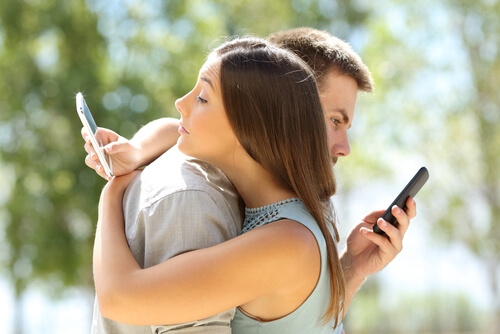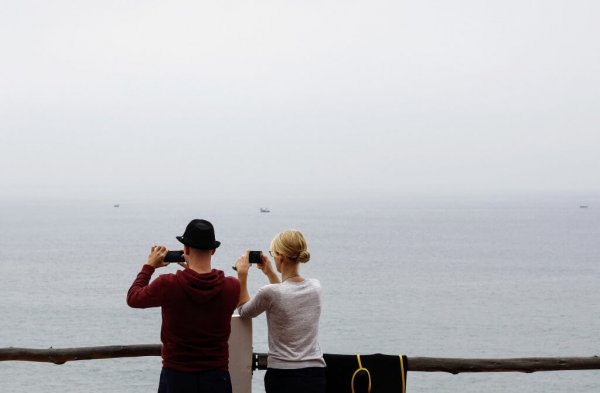Connecting with Others: a Challenge for New Forms of Communication

Technology, in terms of communication, is one of the best representations of the duality our actions can have. On the one hand it gives us experiences. On the other hand it brings serious danger by keeping us from experiences. So, connecting with others is becoming easier and more difficult at the same time.
Social networks, for example, allow us to bring what we have closer. We can be in contact with people who are thousands of miles away in the time it takes to blink. In addition, we can see what places they usually visit, what they like, what their hobbies are or how their social circle evolves.
The danger of this arises when what happens behind the screens acts as a substitute for traditional forms of communication. Connecting with others is much more than just “liking” a post. Talking face to face implies a huge amount of nuances that are lost in “whatsapp“. Photos rarely have the power to reflect a complete reality, or at least as complete as we can capture in person.

We run the risk of becoming dependent on social networks, of forgetting to connect with people through looks and gestures. We also interpret nonverbal language in photos. Sometimes these photos depict us when we don’t want to show the world how we feel. The key is to make the most of new technologies but not to rely on them totally.
Connecting because we need to, or we want to?
We define our lives by uploading our lives day-to-day on social networks. Often an experience is not valid if it is not “published” on social media. It is not enough to live and enjoy an event. We need others to know about it and participate as well.
A study from the universities of Wisconsin, Haverford, Northwestern and Toronto found that couples who put more posts on social networks were the most unhappy.
In general, it can be said that the people who most need outside recognition (post “likes”, visits to their profile, etc.) are also the most deprived on the inside. A person with good self-esteem will not need others to give their approval about photos or trips, partner or friends. They will simply use social networks to connect from time to time, but never out of necessity.

Don’t forget that talking or having a conversation involves more than keeping your eyes on a screen or writing messages. Nor is seeing photos seeing the real landscapes. “Liking” doesn’t mean expressing an opinion, it simply means I am here and I follow you.
The camera in our memory is much better than our phone’s
The true essence of our daily life is recorded in our memory and it is not good to diminish its value to a smartphone photo. A single moment can hide an emotional moment that we can lose if the only thing we use to see it is a camera.
You should sacrifice your phone for a little while (nothing will happen if you leave it home just once). Take time for a coffee, social events, travel and embrace, smile, hold hands and live reality.

It’s true that maybe it’s not just us. It seems that most people have taken a stand for digital versus face-to-face communication. Being able to hang out with them is practically a miracle. So, if you don’t want to lose track of them, you have no choice but to go to the place where they spend most of their time – the digital world.
Real lives are hidden behind social media. There is a life behind each profile. We are more than an image or a contact. Each person is a world that is little reflected in their networks. So, connecting with others is more than being “online” at the same time. Leave your screen behind and you will see what reality really has in store for you.
Technology, in terms of communication, is one of the best representations of the duality our actions can have. On the one hand it gives us experiences. On the other hand it brings serious danger by keeping us from experiences. So, connecting with others is becoming easier and more difficult at the same time.
Social networks, for example, allow us to bring what we have closer. We can be in contact with people who are thousands of miles away in the time it takes to blink. In addition, we can see what places they usually visit, what they like, what their hobbies are or how their social circle evolves.
The danger of this arises when what happens behind the screens acts as a substitute for traditional forms of communication. Connecting with others is much more than just “liking” a post. Talking face to face implies a huge amount of nuances that are lost in “whatsapp“. Photos rarely have the power to reflect a complete reality, or at least as complete as we can capture in person.

We run the risk of becoming dependent on social networks, of forgetting to connect with people through looks and gestures. We also interpret nonverbal language in photos. Sometimes these photos depict us when we don’t want to show the world how we feel. The key is to make the most of new technologies but not to rely on them totally.
Connecting because we need to, or we want to?
We define our lives by uploading our lives day-to-day on social networks. Often an experience is not valid if it is not “published” on social media. It is not enough to live and enjoy an event. We need others to know about it and participate as well.
A study from the universities of Wisconsin, Haverford, Northwestern and Toronto found that couples who put more posts on social networks were the most unhappy.
In general, it can be said that the people who most need outside recognition (post “likes”, visits to their profile, etc.) are also the most deprived on the inside. A person with good self-esteem will not need others to give their approval about photos or trips, partner or friends. They will simply use social networks to connect from time to time, but never out of necessity.

Don’t forget that talking or having a conversation involves more than keeping your eyes on a screen or writing messages. Nor is seeing photos seeing the real landscapes. “Liking” doesn’t mean expressing an opinion, it simply means I am here and I follow you.
The camera in our memory is much better than our phone’s
The true essence of our daily life is recorded in our memory and it is not good to diminish its value to a smartphone photo. A single moment can hide an emotional moment that we can lose if the only thing we use to see it is a camera.
You should sacrifice your phone for a little while (nothing will happen if you leave it home just once). Take time for a coffee, social events, travel and embrace, smile, hold hands and live reality.

It’s true that maybe it’s not just us. It seems that most people have taken a stand for digital versus face-to-face communication. Being able to hang out with them is practically a miracle. So, if you don’t want to lose track of them, you have no choice but to go to the place where they spend most of their time – the digital world.
Real lives are hidden behind social media. There is a life behind each profile. We are more than an image or a contact. Each person is a world that is little reflected in their networks. So, connecting with others is more than being “online” at the same time. Leave your screen behind and you will see what reality really has in store for you.
This text is provided for informational purposes only and does not replace consultation with a professional. If in doubt, consult your specialist.







